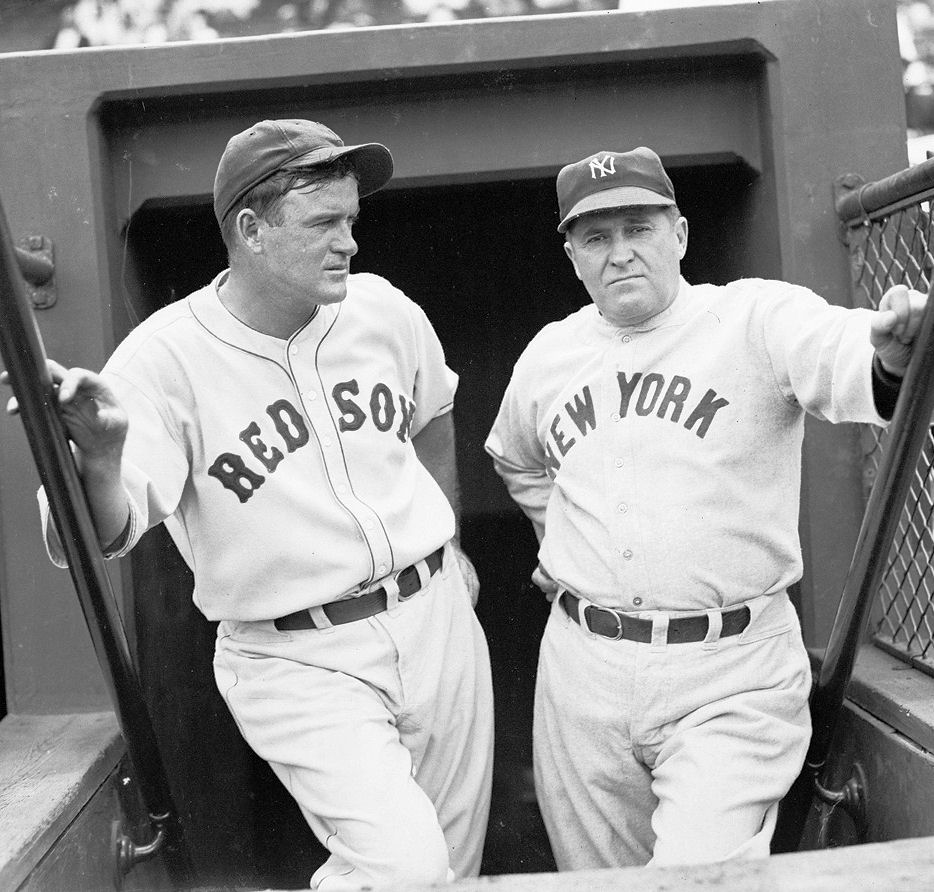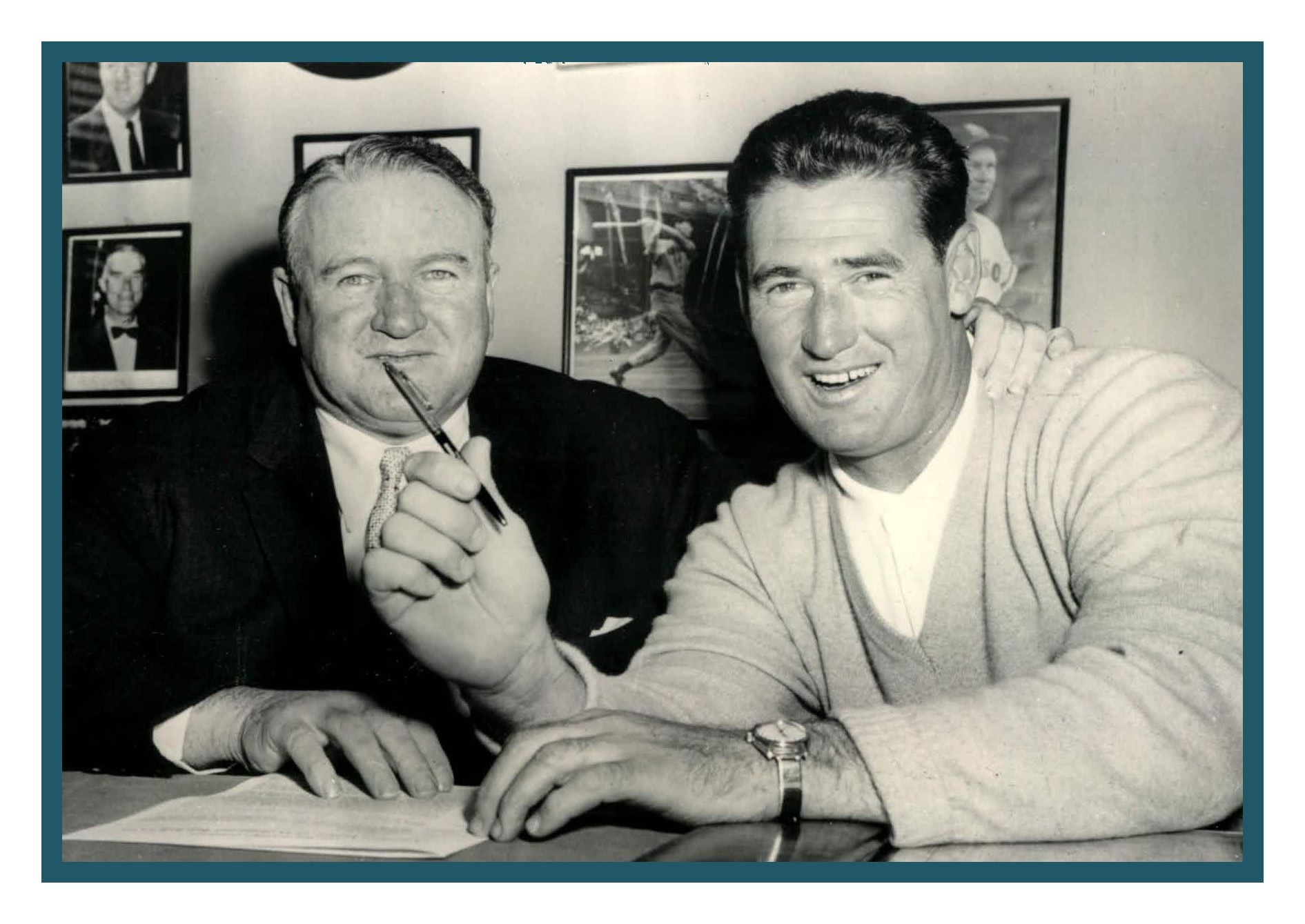|
“FENWAY'S BEST PLAYERS”  |
|||||
Joe Cronin assumed managerial duties of the Red Sox in 1935. During the next ten seasons, Cronin split time between making game-day personnel decisions on the field and playing shortstop at an average rate of 136 games per season, earning MVP consideration in 1937 and 1938. He also drove in better than 100 runs three times in that span and made the American League All-Star roster five times. After years of lackluster teams, Boston improved dramatically in the standings, with winning seasons in all but one year under Cronin during this stretch. By the 1940s, Cronin was no longer the young upstart manager, but was a veteran on a team that was developing young talent. The new generation, men like Ted Williams and Bobby Doerr, admired and respected Cronin. With his stars back and Cronin a full-time manager for the first time in 1946, the Red Sox cruised to the pennant but lost a seven-game World Series to the Cardinals. With most of the star players save Williams having off-years or hurting in 1947, the club fell back to third place. At the end of the season, Cronin took off his uniform for good, replacing the ill Eddie Collins as the club's general manager. During Cronin's 11-year tenure running the franchise (as general manager, president, and eventually treasurer), the team evolved from a contender to a middle-of-the-road club. At the end of the 1947 season, Cronin succeeded Eddie Collins as general manager of the Red Sox and continued through mid-January 1959. The Red Sox competed for the AL pennant in 1948-49 (finishing second by a single game both seasons) thanks to Cronin's aggressive trades, but they began a slow decline during the 1950s and did not seriously contend until after 1950. While most attention has been focused on the Red Sox being the last major league team to integrate its roster (Cronin once passed on signing a young Willie Mays and never traded for an African-American player during his GM tenure), another factor was a large number of "bonus babies" who never panned out. During his years as GM, he had to deal with occasional controversies with Ted Williams, the mental breakdown of outfielder Jimmy Piersall, and the shocking death of young first base star Harry Agganis. He also had to deal with rumors that the Red Sox were going to move to San Francisco, or that he wanted to take over an expansion team in his native city. Joe would protest these rumors, saying that Boston, not San Francisco, was his home, the only home his children had ever known. Meanwhile, Cronin's power within baseball continued to grow. While running the Red Sox, he also served on the major-league rules committee, pension committee, and realignment committee, and represented Yawkey at all the league meetings. When AL President Will Harridge was first rumored to be stepping down in October 1956, Cronin was thought to be the obvious successor. When Harridge finally quit two years later, Cronin was quickly hired to succeed him. Joe spent a life in the game, and he was renowned for his good works outside the game. He set up the Red Sox’ initial connection with the Jimmy Fund, which became the team’s signature charity after its original sponsor, the Boston Braves, left town, and worked with the fund for many years. He received dozens of honors for his work outside the game. Joe Cronin entered the Hall of Fame in 1956, with his longtime friend and rival Hank Greenberg—they were rivals as players, and at the time of induction they were rival general managers. The Red Sox retired his number 4 on May 29, 1984; on the same rainy evening they retired Ted Williams' number 9—the first two numbers the Red Sox officially put out of service. No man had a greater impact on Red Sox history than Joseph Edward Cronin. No man had a greater impact on Red Sox history than Joseph Edward Cronin.
|
|||||

